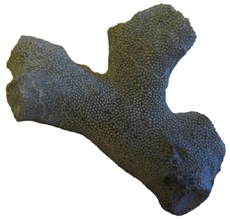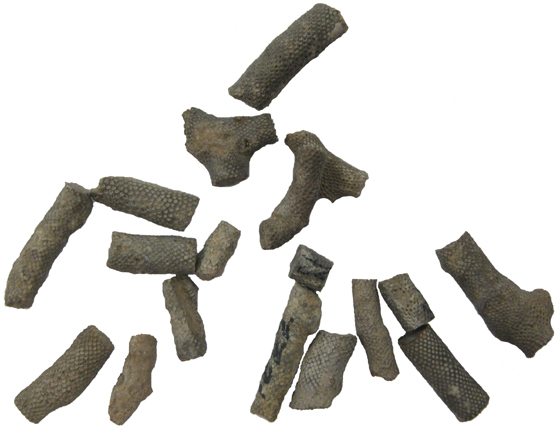
 |
 |
Science
Olympiad
| Phylum Bryozoa or Ectoprocta | ||
Bryozoans or "moss animals" are colonial invertebrates that resemble corals. Bryozoan colonies may grow as encrustations on shells and other objects, form branching structures, thin lacey forms, or stony growths. Bryozoans are related to brachiopods. Bryozoans range from the Ordovician to recent times. Individuals called zooids are around 1 millimeter in length. A U-shaped digestive tract has a mouth on one end surrounded by a ring of tentacles of the lophophore. The anus lies just outside the ring of tentacles at the opposite end of the U-shaped digestive tract. Most individuals are hermaphrodites. Zooids secrete a chitinous or calcareous skeleton around their body called a zooecia. The colonial skeleton is called a zoarium. Colonies form when a single bryozoan larva formed from sexual reproduction attaches to a surface. The single animal asexually reproduces through budding to form the colony. Colonies prefer clear water in which they can filter feed on tiny plankton. Fossil
bryozoans represent colonies of zooids. Although the zooids
are long gone the pinhole-sized holes (zooecia) within the
zoarium can be identified and studied. During the Paleozoic
bryozoans were an important part of many reef systems. During
the Ordovician and Mississippian they were the second or
third most common fossil group after brachiopods and crinoids. |
||
 Bryozoan Archimedes Central Corkscrew Support Lacy Zoarium Branches Missing Carboniferous Mississippi, USA |
 Bryozoan Batostoma jamesi Waynesville Formation Ordovician St. Leon, IN |
|
|
||
Prothero, D.R. (1998). Bringing Fossils to Life: An Introduction to Paleobiology. New York: McGraw-Hill. Walker C. & Ward D. (2002). Smithsonian Handbooks: Fossils. New York: Dorling Kindersley |
||











